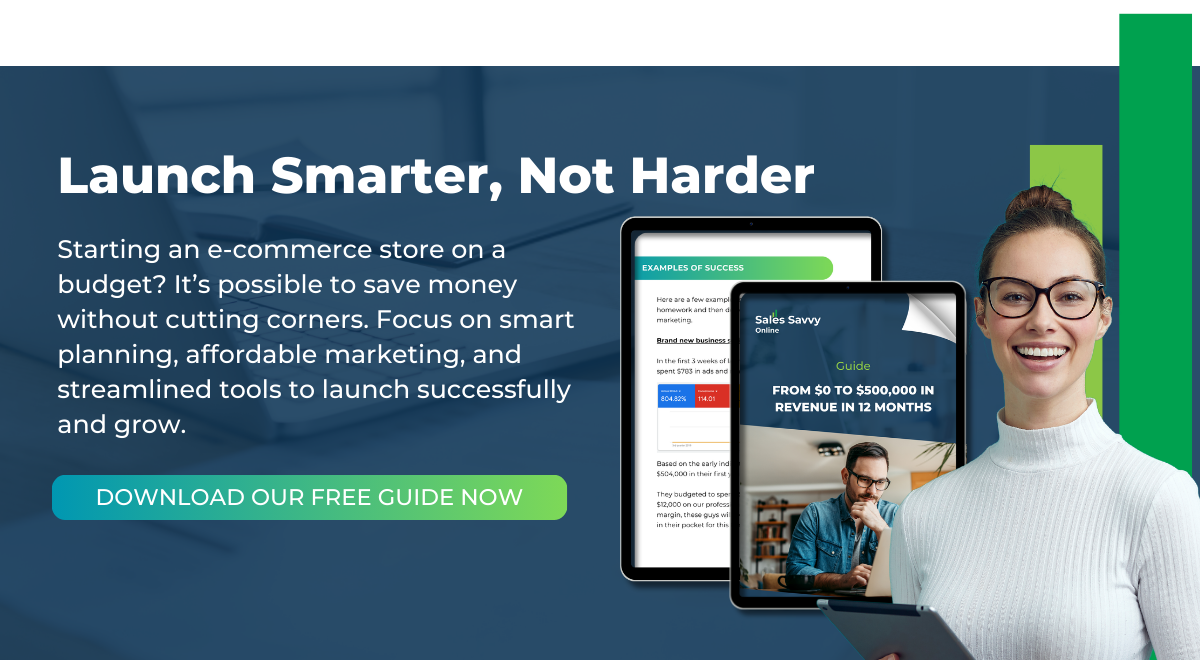Introduction
Starting an e-commerce business is exciting, but let’s face it—it can also feel like a financial juggling act. For many new e-commerce entrepreneurs running on a lean budget, every dollar counts. But here’s the good news: launching a successful budget-friendly e-commerce store doesn’t have to drain your bank account. With the right strategies, you can achieve a cost-effective launch that sets your store up for success from day one.
Whether you’re selling physical products, dropshipping, or working with a fulfilment partner, these budget-friendly e-commerce tips will help you achieve a launch that can grow with your business.
Plan Your Budget Before You Spend a Dollar
Alright, let’s start with the basics: setting up a solid budget plan. It’s tempting to dive right in, especially if you’re eager to get those first sales, but taking a bit of time to map out your finances will save you cash (and stress) down the line. Here’s how to keep things organised:
- Identify Your Core Costs: Think essentials—website, product sourcing, packaging, and some initial marketing. These are your “must-haves.”
- Be Realistic About Marketing: Marketing is crucial, but costs can sneak up on you. Set aside a percentage of your budget specifically for digital marketing channels (more on this later) and aim for steady growth rather than splurging on a big push.
- Keep a Contingency Fund: Always have a bit of cash set aside for those surprise expenses that pop up out of nowhere.
A clear budget plan lets you see where your money’s going, where you can save, and keeps those impulse purchases in check.
Choose the Right E-commerce Platform
Picking the right platform is a big choice, so it’s worth looking at your options. WooCommerce and Shopify are crowd favourites, but each comes with its own benefits and costs:
- WooCommerce: If you’re already on WordPress, WooCommerce offers lots of customisation and is pretty low-cost. Since it’s open-source, you’re mainly paying for hosting, themes, and any necessary plugins.
- Shopify: Shopify is simple, sleek, and comes with support. Yes, there’s a monthly fee, but it’s straightforward to use and ideal for beginners who don’t want to mess about with too much tech.
- Pro Tip: Hold off on the fancy themes and paid plugins at first. Free themes often have everything you need to get started, and you can always upgrade later.
Use Lean Marketing Strategies
Marketing doesn’t have to drain your budget. In fact, there are smart ways to build up your customer base without overspending. Here’s where to focus:
- Social Media Marketing: It’s cost-effective and essential for building your brand. Start with the platforms where your audience hangs out—Facebook and Instagram are reliable for most e-commerce, and TikTok is great if your target market is younger.
- Email Marketing: Email is a top channel for ROI. Start building an email list early on by offering discounts or exclusive content. This way, you’ve got a group of potential customers ready to go as soon as you launch.
- Content Marketing: Launching a blog on your site is an affordable way to drive traffic. Share helpful info that speaks to your customers’ needs—if you’re selling fitness gear, blog about workouts or health tips.
- Pro Tip: Encourage customers to share their experiences on social media. User-generated content is a powerful (and free) marketing tool.
Invest in Quality (Not Quantity) for Product Photos
Good product photos are essential, but that doesn’t mean you need to splash out on a pro photographer. Here’s how to get top-notch images on a budget:
- Use Natural Lighting: If your phone’s camera is decent, natural light will do wonders. Just avoid harsh direct light, and aim for clear, bright photos.
- DIY Setup: Use a plain (ideally white) background and keep props simple so your products take centre stage.
- Edit Smartly: Free tools like Canva or Snapseed can handle basic edits like brightness and contrast, making your photos look polished.
Strong visuals can elevate your brand without the hefty price tag—just be sure your photos look crisp and professional. There are also some great AI tools you can use, our favourites are: AdCreative AI and AI Studios
Keep Inventory Costs Low with Dropshipping or 3PL Partners
Inventory management is one of the biggest challenges for new budget-friendly e-commerce business setups. Here’s how to keep those costs under control:
- Consider Dropshipping: With dropshipping, you only pay for products once you make a sale, so there’s no upfront inventory cost or storage to worry about. Just be sure to vet your suppliers for quality and reliable shipping times.
- Partner with a 3PL Provider: If dropshipping isn’t for you, a third-party logistics (3PL) provider can handle storage and fulfilment, which can be a cost-effective option if space or time is limited.
- Pro Tip: Start with a smaller range of products to gauge demand. Expanding gradually helps avoid the risk of overstocking.
Optimise Your Website for Conversions
A great-looking site is only part of the equation; it also needs to turn visitors into buyers. Here’s how to optimise your site without spending a fortune:
- Clear CTAs: Make sure “Buy Now” or “Add to Cart” buttons are obvious and easy to find. The smoother the journey, the more likely visitors are to check out.
- Mobile-Friendly Design: Most shopping happens on mobile these days, so choose a theme that looks sharp on smaller screens.
- Streamlined Checkout Process: Make it quick and easy. Offering a guest checkout option is a nice touch for those who don’t want to create an account.
- Pro Tip: Track and analyse your conversion rates regularly. Simple changes like adjusting button placement or cutting down on form fields can boost conversions.
Harness the Power of Analytics from Day One
Data might sound intimidating, but it’s actually one of your best allies when you’re on a budget. Here’s how to put it to good use:
Google Analytics: It’s free and packed with insights on everything from traffic to customer behaviour. Knowing what’s working (and what isn’t) helps you make informed decisions.
Facebook Pixel: If you’re running Facebook ads, the Pixel tracks actions and helps optimise ads. It’s free and incredibly useful for seeing what your audience does on your site.
Pro Tip: Review your analytics weekly or monthly. Staying on top of the numbers helps you adjust strategies quickly and avoid wasting money on what doesn’t work.
Get Customer Feedback Early
Customer feedback is invaluable when you’re just starting out. It can save you from costly mistakes and helps you refine your offerings:
- Surveys: Post-purchase surveys are a simple way to learn about your customer’s experience. Even a quick “How was your shopping experience?” can give valuable insights.
- Encourage Reviews: Positive reviews build trust, and less-than-stellar ones show you areas to improve.
- Social Media Polls: If you’re planning new products or changes, use polls to engage your audience and gather feedback.
- Pro Tip: Feedback isn’t just for product development—it’s for fine-tuning the entire customer journey. Happy customers are more likely to return and recommend you to others.
Automate Repetitive Tasks to Save Time (and Money)
Time is money, and automating repetitive tasks frees you up for more valuable activities. Here’s what to consider automating:
- Email Marketing: Use tools like YotPo or Klaviyo for automated emails, like welcome messages and cart reminders.
- Social Media Scheduling: Platforms like Buffer or Later let you schedule posts in advance, so you stay consistent without the daily grind.
- Order Processing: Shopify and WooCommerce offer integrations with fulfilment partners that handle order processing for you.
Automation takes routine tasks off your hands, giving you more time for customer service or marketing.
Start Small, Scale Wisely
In e-commerce, it’s usually best to start small and scale as you go. Trying to do everything from the start can be a fast track to burnout (and a drained bank account).
- Test Your Niche: Start with a small selection of products to test what works. This way, you get valuable data on what your customers want without going all-in on untested items.
- Expand When It Makes Sense: Avoid putting all your profits straight into new products or channels. Grow at a pace that makes sense for your business.
By following these budget-friendly e-commerce tips, you’ll have a solid foundation for a cost-effective launch that’s built to grow. Starting small and staying strategic will help you conserve funds and avoid common pitfalls. Now, go on and turn that e-commerce dream into a reality!



